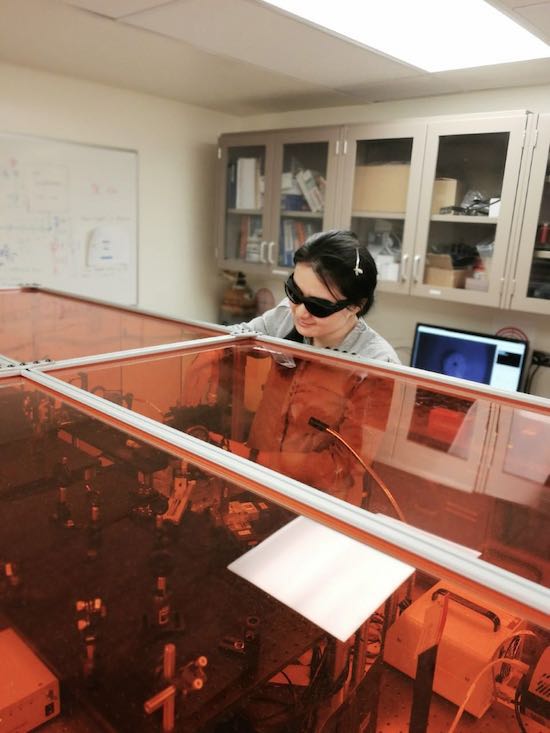STEM shoutout: Dr. Jin Zhang
UNM geologist working on two NSF studies about Earth’s internal structures
Dr. Jin Zhang, assistant professor of Earth and Planetary Sciences, is currently undertaking two NSF-backed projects in which she studies Earth’s internal structure, composition, and processes in hopes of providing a more dynamic view of the Earth’s interior.
To carry out her research, Zhang utilizes diamond anvil cell and multi-anvil press apparatuses to simulate extreme temperature and pressure conditions of Earth’s interior. From there, she applies various laser spectroscopy, X-ray diffraction, and chemical analysis techniques to learn of the physical properties and chemical reactions taking place in the extreme conditions of Earth’s inner layers.
Her current project, in collaboration with UNM seismologist Dr. Brandon Schmandt, utilizes a unique seismic discontinuity 410 km deep in Earth’s interior to find out how much of the mineral olivine is contained within Earth’s interior.
“The amount of olivine in the bulk rock is closely related to the rock’s capability of producing voluminous basaltic magma,” Zhang said.
“Thus, our understanding of how much olivine we have in the Earth’s interior at different geographic locations shed new light on not only the mineralogical heterogeneity of the Earth’s interior but also the long-term magma production potential in geological timescale,” Zhang said.
In addition to her study of olivine content within Earth’s interior, Zhang is also utilizing an NSF grant to study the high pressure-temperature anisotropic sound velocities of clinopyroxene, which is a major mineral of both Earth’s upper mantle and the top layer of the subduction slab.
“Geoscience is not a “science of field work on hard rocks only” anymore. I have always been looking for ways to link the physical and chemical measurements people made on the surface for solid Earth to all kinds of chemical reactions, phase transitions and dynamical processes that take place in the Earth’s interior. That is where mineral physics can make a difference, serve as the bridge between petrology, geochemistry, and geophysics, and we are aiming at getting a better view of the Earth’s interior,” Zhang said.
In regards to the future, Zhang has her sight set on space, and has a grant proposal pending with NASA. Zhang hopes to apply the high-pressure research that she is doing here to other planets within the solar system.
“The Mars InSight Mission is sending a seismometer to Mars, so we are expanding our research territory to the entire solar system. This is really exciting,” Zhang said.
To learn more about Zhang’s research, visit her research group website.

